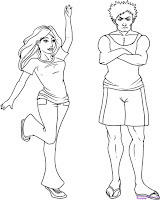For several decades now I have been practicing different martial arts and came to conclusion that at the top level of any martial art there is a very similar if not the same knowledge and performance.
Why is it so?
 People like to think we are different. But, what I like to point out is that as people we are all the same. We have almost identical “hardware” (two legs and hands, one body, head …) that moves in the same way. Well, one is taller and the other is heavier etc. but there is no big difference when it comes to how we sit down, walk, eat or fight. We use the same musculatures, joints or/and bones. Our “software” is pretty similar as well (we have fears, we are happy, we are angry …). Our brains work through the ‘same’ neurons and have same regions for processing vision, thoughts, and emotions. Therefore, our thoughts are produced, stored and retrieved in the same manner. And the same goes for our cerebellum system where our reactions are ‘memorized’ and fired from.
People like to think we are different. But, what I like to point out is that as people we are all the same. We have almost identical “hardware” (two legs and hands, one body, head …) that moves in the same way. Well, one is taller and the other is heavier etc. but there is no big difference when it comes to how we sit down, walk, eat or fight. We use the same musculatures, joints or/and bones. Our “software” is pretty similar as well (we have fears, we are happy, we are angry …). Our brains work through the ‘same’ neurons and have same regions for processing vision, thoughts, and emotions. Therefore, our thoughts are produced, stored and retrieved in the same manner. And the same goes for our cerebellum system where our reactions are ‘memorized’ and fired from.
During my years of practice I have had lots of Shifu-s and Sensei-s or Masters to learn from and observe. I still feel very much honored for the opportunity and for what they thought me. Gradually, I figured out that most of them perform martial arts in the ‘same way’. No matter the art. The other thing that seemed even bizarre to me was that all described one way and performed it the other. OK, not all, but definitely most of them. Why this happens? My opinion is because they want to stay with the style they’ve learned through years of hard practice. How could they admit ‘I was wrong and practiced wrongly?’ So, with years they have figured out the right motion of a body and firing the instincts which gave them the chance to be better. And although they still think in past, traditional, ways of their system, they use their ‘body knowledge’ learned through years of fight and practice.
Now, that I have framed my general thoughts I’d like to invite you to help me (dis)uncover a new perspective with which I begun in the post Pushing hands where I described an idea of ‘open your mind’. Elaborating this idea further we come to Tai chi that teaches slow motions while you have to be stable and rooted. Pushing hands teaches us to ‘feel’ whereas Wing chun is more combat and movement oriented. Tui shu is to learn ‘how to use opportunities given by opponent’. But, to master martial arts one has to be (know) all of this: has to have stability and mobility, relaxation and tension, flexibility and stiffness, timing and waiting, balance and being wobble, feeling and sensing, listening and foreseeing… and more. Why not combine them all then? Like Tai Chun.
We should be aware that those slow motions in Tai Chi are just the slow representations of fast movements, hits or kicks. Punches in Wing Chun cannot have ‘necessary force and penetration’ if the position is not stable and at the same time sinking so it enables canalizing the power and force into the opponent. Unfortunately, rare are masters that understand and teach this.
![http://www.duranduranstore.com/ekmps/shops/duranduranstore/images/duran-duran-planet-earth-uk-one-sided-promo-only-12-single-[2]-8159-p.jpg one sided](https://blogger.googleusercontent.com/img/b/R29vZ2xl/AVvXsEjRD1MNZDmt-CP3Y8E3tHalNDOYGacACQ2W0Em390mv3MRHEVzXn8yDBMymoGTBnL6B9OZmP1Lk999gmrpKs3MkW4HwauNGdPea4dg5IjvaCR2MbE99KcmhyphenhyphenXHx2G8I3YlKWx9DU5a5-xPz/s200/one+sided.jpg) And the same is true in the leadership. Most teachers, books (manuals), coaches and programs are just one sided unable to merge different knowledge and fields of the subject. The result is ever present - numerous books, more names for a single term ‘leadership’ (Added value of leadership names or labels). Can we do something about it?
And the same is true in the leadership. Most teachers, books (manuals), coaches and programs are just one sided unable to merge different knowledge and fields of the subject. The result is ever present - numerous books, more names for a single term ‘leadership’ (Added value of leadership names or labels). Can we do something about it?Comments are appreciated!





This post was informative. I really liked this post. Can you please write more on it? I would love to read it. Thank you so much!
ReplyDeleteThank you - I did elaborate this topic in my published book "leadership by Virtue" ...
Delete